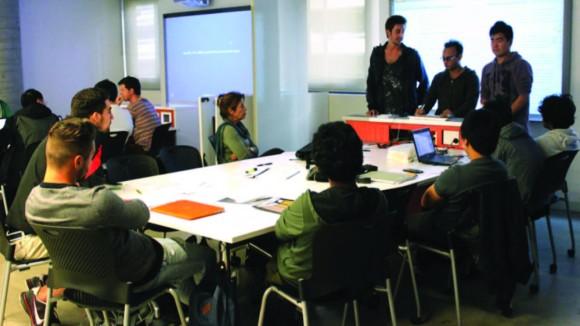
Bronwyn Holland with her block mode class
|
Lecturer: Faculty: Project:
|
|
Teaching in the School of Information, Systems and Modelling, Bronwyn Holland wants to introduce interactive technologies and use the new collaborative pod classrooms as a way of enhancing the already ‘flipped’ design of a block mode subject (Interrogating Technology: Sustainability, Environment and Social Change). What the project is about“Previously, having to timetable parallel streams of diverse activities such as lectures, tutorials and small group work in a one day block was a nightmare. The new flexible, collaborative space solves this problem for a large cohort. We can hold seminars and invite guest speakers as well as do group work at different scales.” Why the project is being introducedAs the subject is taught in block mode, with only two and a half days of class contact on campus over the semester, the teaching team recognised how important it was to make that face-to-face time in class as engaging, productive and effective as possible. So they looked into ways of enhancing students’ learning of concepts and perspectives that extend the engineering curriculum, increasing students’ sociotechnical literacy and confidence. How the project is being implementedThe subject is being enlivened through developing preparatory tasks and online resources to enable more intensive and productive face-to-face sessions in the collaborative classrooms. Challenges and considerations
“I’m enthusiastic about these new spaces coming live and the potential for them to support experimental teaching approaches by virtue of their design, high-level and supported technical facilities and attractive ambience.” Exploring further |

